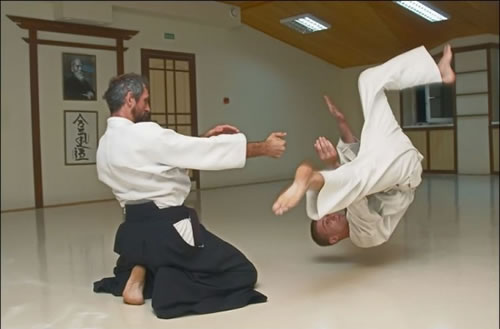The second fundamental question crucial to designing enemies for an action game is:
2. How will this enemy counter the player’s first-tier tactics?
Action games give the player a hammer. It looks like a broadsword or an assault rifle, but it’s still a hammer. And when you have a hammer, every enemy looks like a nail. A nail doesn’t have to do anything complicated to look smart; all it has to do is avoid getting hammered right away! If an enemy forces the player to reach into their toolbox for a second option, they’ll show that they are clever, and the player will feel clever, too.

Good AI
The obvious way to counter the player’s basic tactics is through simple invulnerability. “That armor is too strong for blasters.” It’s crucial that this invulnerability is communicated clearly, through the look of the enemy, how they respond to the player’s attack, and any supporting effects or dialog. If the player doesn’t realize they are not being effective — or is misled into thinking they have done damage when they haven’t — the enemy will just seem poorly tuned.
- Carries a shield that blocks bullets, but any other kind of attack causes them to drop their shield and expose themselves to fire
- Cannot be killed with melee attacks and must be thrown into an environmental hazard
- Bullets bounce off the vehicle, but you can snipe the driver out
A more subtle way to foil the player’s main method of attacking is to preemptively take action to prevent it or require another action be taken before the attack to make it a two-step process. These enemies appear intelligent, but they still allow the player to user their (hopefully) satisfying primary attack.
- Takes cover behind an object, requiring the player to flank or drive them out of cover
- Wears a full-body energy shield that must be taken down before they can be damaged by normal bullets
- Blocks every sword swing, but is stunned if their own swing is blocked
It is also possible for an enemy to behave in such a way that it is more difficult for the player to execute on their first-tier attack. This can be difficult to tune for multiple difficulty levels, but if the counter-strategy only works on the their main attack, then players of any skill level should be able to cope by changing their tactical choices instead of having to execute beyond their skill level.
- Flees out of melee range faster than the player can pursue, but has no defense against ranged attacks
- Keeps up a constant barrage of fire, forcing the player to hide, but unable to get away from a grenade thrown from behind cover
Again, the idea is not to make an enemy that is difficult or frustrating, or even especially sophisticated, but that has a clear counter for the player’s primary attack. This will require the player to stretch, tactically, and figure out their alternatives, but any amount of experimentation should be rewarded by a quick victory.
